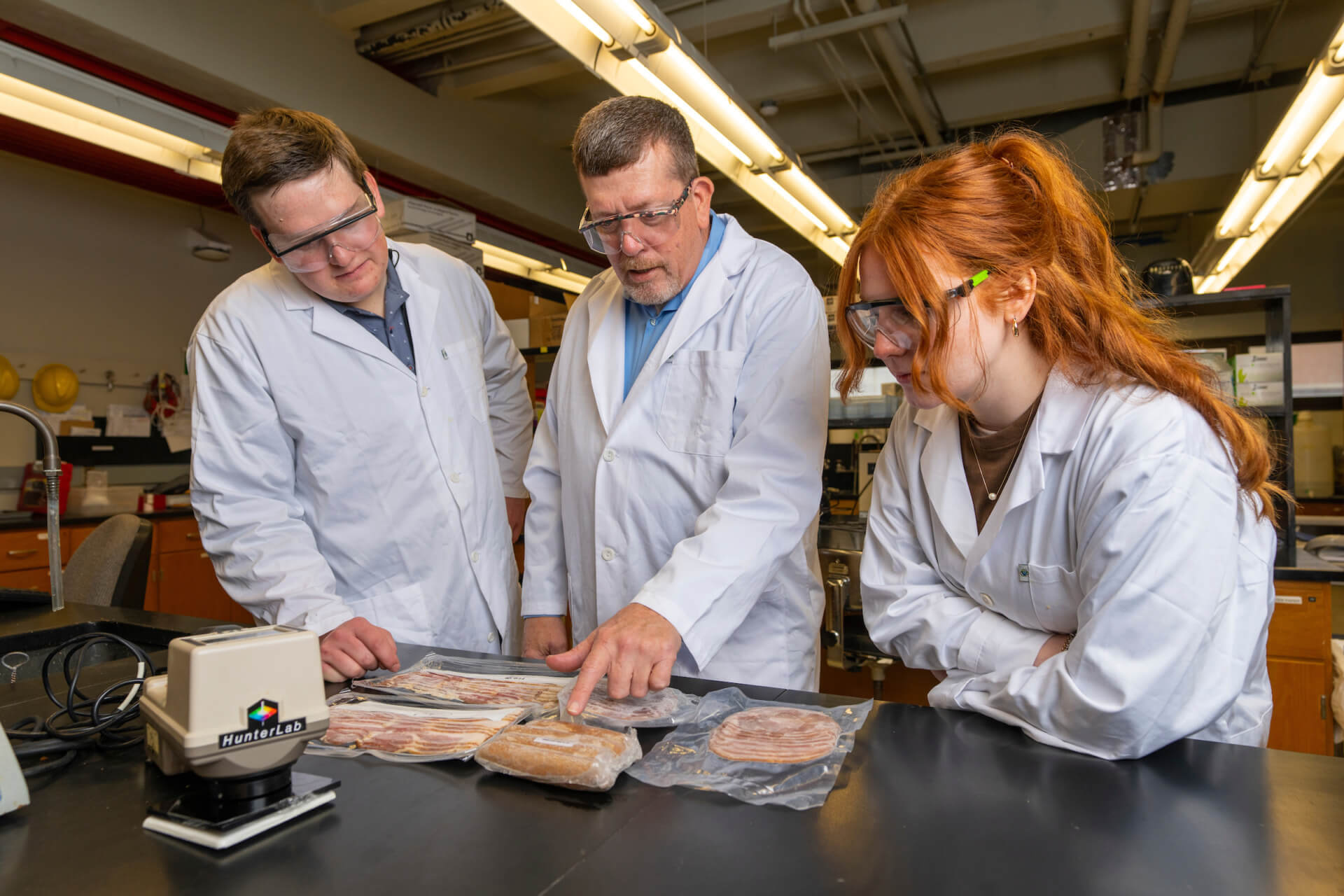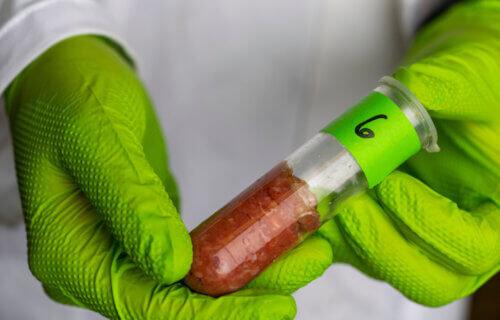COLLEGE STATION, Texas — Foods like beef jerky, pepperoni, and bacon may be huge favorites, but they aren’t all that good for health because of the curing process. Now, Texas A&M meat scientist Wes Obsurn, Ph.D., is working on a way to make these meats without curing them at all.
Conventional curing involves adding sodium nitrite to reduce bacterial growth and preserve the food during the cooking and chilling processes. The problem is that these substances have a long link to cancer. In recent years, meat companies have come out with uncured versions of meats with “no added nitrates or nitrites except those naturally occurring.” Often times, food scientists derive these alternatives from celery. The problem is that you may end up with an undesirable veggie taste in your meat.
For the past several years, Osburn has been studying the idea of a novel amino acid alternative curing system for meat. Just this past year, he received a $500,000 grant from the U.S. Department of Agriculture–Agriculture and Food Research Initiative to determine the feasibility of something like this. Nitrites and nitrates naturally occur in the body, so Osburn and his team believe they can add an amino acid called L-arginine to meat and activate the nitric oxide synthase (NOS) enzyme within it. This enzyme is able to convert L-arginine to nitric oxide (NO) and another amino acid, L-citrulline.
Osburn was listening to one of his colleagues, Dr. Nathan Bryan, speak about the endothelial nitric oxide synthase (eNOS) system in the body and how it utilizes L-arginine to make nitric oxide, improving blood flow. This is when he connected the dots. He started thinking that the eNOS enzyme could be activated by the addition of L-arginine to create nitric oxide and cure meats.
“It could be that this approach is actually a ‘natural curing process’ by adding an amino acid to an enzyme whose primary function is to generate nitric oxide,” Osburn says in a university release. “I’m not adding any nitrates or nitrites.”

Osburn’s team wants to make it possible for meat processors to effectively use the NOS system for curing meat and poultry in a consistent manner to keep up with consumer demands. However, they have to validate their process and make sure it works well enough to apply to a variety of conditions. To do this, they have to test it on various types of cured beef, pork, and poultry, which will take ample time.
“There are differences in the amount of the NOS enzymes within different muscle groups across various meat species,” the meat scientist says. “This enzyme is closely associated with the mitochondria, so there tends to be more NOS enzyme in muscles used for locomotion. There are also differences in myoglobin content (meat color pigment), so if we can generate nitric oxide via the NOS enzyme, the cured meat color may vary.”
“The question we are still trying to answer is will the NOS enzyme generate sufficient amounts of nitric oxide to develop acceptable cured meat color and enough residual nitrite to ensure that the product is safe, regardless of whether it is summer sausage or pepperoni or some other product?” Osburn adds. “Think about it, if we can make pepperoni through this process, there could be a huge economic impact since we consume a lot of pepperoni here in the U.S.”
In the meantime, the team is manipulating several factors, such as the arginine concentration, meat acid-base chemistry, temperature, and time to determine the best conditions for producing a prototype amino acid-cured ham product. Researchers are also looking ahead to applying their system to a wider range, such as beef jerky, bacon, fermented summer sausage or salami, and poultry hot dogs. The team says meat companies are really interested in seeing where this goes, because lots of research is still up in the air about it all, and there may be some upcoming USDA rulings that may not be in their favor regarding current “uncured” products put out on the market.
